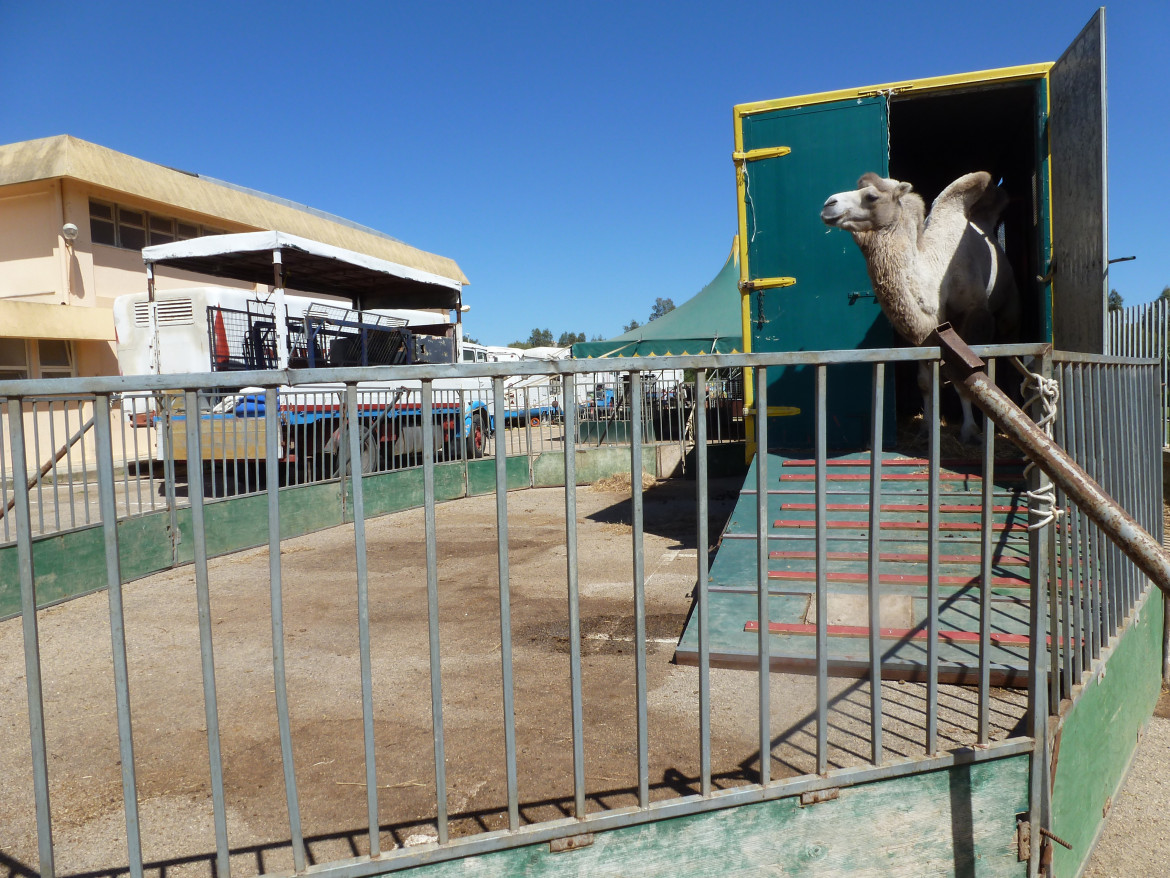There are about 2,000 animals still being abused, oppressed, malnourished and kept in conditions of extreme psychological and physical discomfort. This is the Italian reality of the circus, supported by about 3 million euros annually, according to the latest available data, by funds obtained from public funding and disbursed by the Ministry of Cultural Heritage and Tourism. Moreover, our country has postponed the enabling law for the reorganization of entertainment, which also includes circuses and the phasing out of animals, to 2024.
Inappropriate delay – says Eleonora Panella, Director of Exotic Animals at LAV – Given that the text is already ready from the previous legislature, it is only a matter of removing it from the tray in which it was placed. That is why we ask Minister Sangiuliano not to wait until 2024 and to proceed immediately with the approval of the executive legislative decree that includes a review of provisions in the sectors of circus activities and traveling shows, specifically aimed at gradually overcoming the use of animals in the implementation themselves.
Even the rest of Europe It really doesn’t skimp on brilliance on this front. If this is true, in fact, of the 27 member states, 25 have adopted nationwide restrictions on the use of wild animals in circuses, only 4 (including Spain, which has just approved a law on the matter), have prevented such restrictions. the use of wild animals in the circus, the use of all animals, both exotic and domestic; While 8 member states banned the use of some types of animals only. In short, even in this issue Europe shows its schizophrenic face.
On the one hand, it talks about animal welfare and adopts strategies, such as farm to fork, that go strictly in the direction of ensuring it, on the other hand, there are no restrictions on some member states, notably France, Germany and Italy. Preserving the old style of entertainment, such as the circus, where animals are used and often raped for purely commercial purposes.
European citizens own it They are for a long time, given that they are increasingly speaking out in favor of banning wild animals in circuses, as evidenced by the petition on this issue that in October 2021 collected more than a million signatures in Europe. Also in 2021, polls revealed that 62% of European citizens believe the EU should completely ban the use of all wild animals in circuses, and 83% demanded that Europe ensure its cruelty to animals is prohibited. Added to all this is the risk of the spread of pathogens given that, according to scientists, 75% of emerging infectious diseases are of a zoonotic nature and most of them originate in wildlife.
Dealing with circuses is a great deal of variety It is a wild animal that, in addition to being in close or even direct contact with humans and other animals, is regularly transported from one region to another and from one country to another. This poses a high risk of zoonotic spread, especially since circus animals do not receive regular veterinary examinations. For example, in the United States, it has been proven that elephants infected with tuberculosis were used in circus performances, and in Germany, a trainer contracted a cowpox virus infection that was transmitted to him from a circus elephant.
That’s why you ask the government ugh The Italians decided to “act without delay to get rid of all the approximately 2,000 animals still in our circus”, a figure among the highest on the old continent. An even more sincere appeal after the recent publication of the study conducted by the Dutch AAP on the psychological and physical conditions of animals rescued from circuses between 2015 and 2021, coming from Spain, France, Poland and Germany and from which shocking data emerged: of the 73 animals rescued, 89% suffered From psychological or physical trauma, unfortunately 3 of them were euthanized after arriving at AAP facilities due to the many irreversible traumas they suffered.
Overall, 8 out of 10 animals are found to have multiple veterinary or behavioral problems. The extremely poor sanitary condition in which the AAP staff found the animals is a clear sign that veterinary examinations in circus venues are carried out superficially, or not at all.
«European Union, country Members, our country cannot – as Eleonora Panella says – continue to hide behind the idea of imitating the circus, which has shown moreover to be very harmful to children, as already acknowledged in 2016 by several Italian psychologists, who identified these contexts, far from Allowing and encouraging knowledge of animal reality, as a pedagogical method of disrespecting living beings, leading to ignoring messages of suffering, hindering the development of empathy, which is a key moment of formation and growth, as they demand an inappropriate, entertaining, and exhilarating response to pain, discomfort, and injustice.
But there is also good news. Lav plans to expand the already existing Terra Lav Center for the Recovery of Wild and Exotic Animals located in Semproniano (Grosseto), which will be able to welcome and care for more animals from traumatic experiences, abuse and exploitation. In fact, the organization has purchased a green area of 23 hectares, where animals will enjoy spaces suitable for their needs and will be treated with innovative techniques, appropriate food and expert veterinary care by dedicated staff. “All areas will be built – says Panella – according to the highest international standards, and will be accommodated and developed by a network of realities already involved in the sector, such as the Born Free Foundation, the AAP Foundation and other entities that have already been active for decades in the field of reserves and recovery centers.


